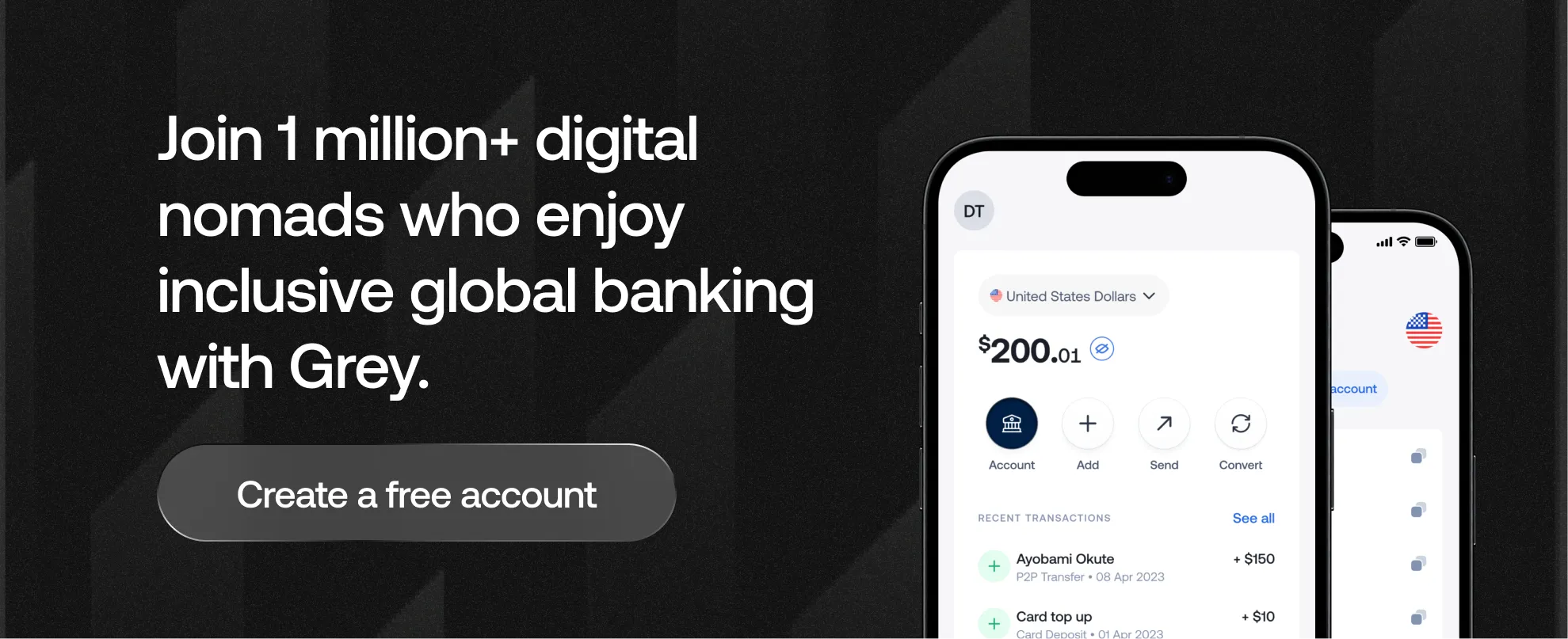

Living abroad, whether as an expatriate, international student, digital nomad, remote worker, or frequent traveller, has various financial challenges. Without the right tool, navigating currency conversions and managing international payments can be frustrating. Fortunately, the increasing popularity of virtual cards has proven to be a reliable solution, offering convenience, security, and flexibility for those living abroad.
In this article, we’ll share how virtual cards can streamline your financial life abroad and why they are an essential tool.
Also read: The best international bank accounts for freelancers and remote workers
Virtual cards are digital-only payment cards you can use online, typically linked to a bank account or digital wallet. Unlike physical debit or credit cards, virtual cards lack a tangible counterpart. They come with a unique card number, expiry date, and CVV code, which can be used for online transactions or, in some cases, contactless in-store payments via digital wallets like Apple Pay or Google Pay.
They are often issued instantly through a mobile app or website, making them highly accessible and easy to manage. These cards can be denominated in various currencies, including USD, EUR, and GBP, and are widely accepted by payment gateways. They are particularly valuable for international transactions, eliminating many of the hurdles associated with traditional banking abroad.
Before delving into the benefits of virtual cards, let’s consider some common financial difficulties faced by those living or travelling abroad:
Also read: Freelancer's guide to handling currency fluctuations
Virtual cards address these challenges directly by offering a seamless and secure way to manage your finances abroad. Let’s explore how they simplify life overseas.
Virtual cards, especially those backed by major payment networks like Mastercard or Visa, are accepted by millions of merchants worldwide. Whether you’re booking a flight, paying for a Netflix subscription, shopping on Amazon, or purchasing an online course on Udemy, a virtual card ensures your payment is processed smoothly. For example, the Grey virtual dollar card is accepted anywhere a US card is supported, making it ideal for international e-commerce and subscription services.
This global acceptance eliminates the frustration of declined transactions, which is common with local cards when used abroad. Virtual cards also allow you to pay in the merchant’s currency, reducing the need for costly currency conversions.
One of the greatest advantages of virtual cards is their ability to save on currency conversion fees. Many virtual card providers, such as Grey, allow you to fund your card in USD and spend directly in that currency, bypassing double conversion fees. This flexibility is very helpful for those living in multiple countries or frequently travelling.
Security is a top concern when living abroad, especially when making online purchases or using cards in unfamiliar locations. Virtual cards offer robust security features that protect your finances. Here are some features that offer additional security for virtual cards.
Unlike traditional bank cards, which can take days or weeks to be issued, virtual cards can be created instantly through a mobile app or website. This is particularly useful for digital nomads or freelancers who need immediate access to a payment method for international clients or expenses. For instance, Grey’s virtual USD card can be set up in minutes after verifying your identity, with a one-time creation fee of $4 and no maintenance fees or hidden charges. The ease of setup is a lifeline for those who face regional restrictions when opening foreign bank accounts. Virtual cards offer a convenient solution, enabling you to transact globally without requiring a local account.
Managing finances abroad often involves juggling multiple currencies and accounts. Virtual card apps simplify this by offering real-time spending insights and transaction histories. Many providers allow you to track every transaction, set spending limits, and monitor your USD balance directly from the app.
Freelancers working with international clients face unique financial challenges, such as receiving payments in foreign currencies or paying for tools like Upwork Connects. Virtual cards bridge this gap by enabling seamless cross-border transactions. Virtual cards also integrate with platforms like PayPal, Stripe, and Fiverr, allowing freelancers to link their cards for payments or withdrawals.
Expatriates and digital nomads often rely on international subscriptions for entertainment (e.g., Spotify, Netflix), productivity tools (e.g., Google Workspace), or online learning (e.g., Coursera). Virtual cards make it easy to pay for these services without worrying about compatibility issues with your card. Additionally, virtual cards can be used for recurring payments, with the option to freeze or delete the card if you cancel a subscription, ensuring no unauthorised charges occur.
Virtual cards are environmentally friendly, as they eliminate the need for plastic production and shipping.
Also read: The easiest way to get a virtual dollar account for AdSense earnings
Among the many virtual card providers, Grey is a top recommendation for expatriates, freelancers, and travellers. Here’s why the Grey virtual dollar card is an excellent choice.
Getting started with the Grey virtual dollar card is straightforward. Follow these steps to create and fund your card:
Virtual cards are a powerful tool for simplifying life abroad, offering global acceptance, cost savings, enhanced security, and unmatched convenience. They empower you to manage your money with confidence, no matter where you are in the world.
For those seeking a reliable and cost-effective virtual card, the Grey virtual dollar card is an exceptional choice. The platform offers low fees, a user-friendly app, and a functional virtual card, making global payments effortless for freelancers and travellers.
Sign up to create your virtual USD card today and embrace the freedom of borderless banking.




.svg)
Back to top